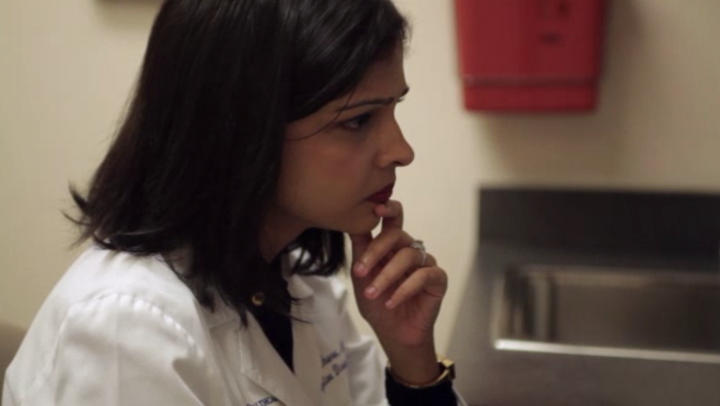Keep reading to learn more about the diagnostic process for ulcerative colitis, including what tests to expect.
Initial testing and evaluation

The first step in reaching a diagnosis is seeing a gastroenterologist, a doctor specializing in intestinal problems. Some people refer to gastroenterologists as GI (gastrointestinal) doctors.
The doctor will ask you about your:
- medical history
- general health
- family history
- home environment
- daily activities
- diet
Partner with your doctor to identify the problem. With a correct diagnosis, you can begin treatment and feel better.
Understanding your symptoms
It’s important to provide as much information as possible about your symptoms and when they occur. This helps your doctor understand you and your condition. If possible, keep a journal of your symptoms and take it to your appointment. Log your bowel movements, bleeding, diarrhea, fevers, joint aches, and other symptoms. Write down when they start, how long they occur, and what makes them better or worse.
For example, you may log that you began an episode of diarrhea at 6:30 p.m., 30 minutes after eating a large meal, and noticed blood in the diarrhea. This kind of detail can help your doctor investigate your condition.
Why an accurate diagnosis is important
If you have ulcerative colitis, your symptoms may be
According to a
To help your doctor make an accurate diagnosis, be patient and remain an active participant in your testing and care. Together, you can pinpoint the reason for your symptoms and get the therapy you need.
What to expect at your doctor’s visit
Once a doctor has asked about your medical and family history and symptoms, they may conduct a physical exam. This can involve:
- checking your blood pressure, heart rate, and temperature, which can provide information about the severity of the condition
- listening to your abdomen with a stethoscope
- lightly pushing on your abdomen and feeling for tenderness or masses
A doctor may also recommend a digital rectal exam. This can check for blood in your stool.
Ulcerative colitis tests
A doctor will likely recommend blood and stool tests and an endoscopy for an accurate diagnosis of ulcerative colitis.
Blood tests
Researchers in a
A blood test can help identify a high white blood cell count, a signal of inflammation in the body. Blood tests can also detect if you are anemic, which can occur due to bleeding in the colon or rectum.
Stool tests
A stool test involves collecting a stool sample and sending it for analysis. In addition to identifying high white blood cell counts, it can also help doctors rule out other causes of diarrhea, such as bacterial or viral infection.
Although blood and stool tests are helpful, they may not always tell your doctor what is causing your intestinal problems. However, they confirm that more tests are needed to find the cause of the inflammation.
Stool tests
Endoscopy
The standard tests doctors use to accurately diagnose ulcerative colitis is a colonoscopy or flexible sigmoidoscopy.
Colonoscopy
With a colonoscopy, your doctor can look inside the rectum and the entire colon using an endoscope. Your doctor may also take a painless small tissue sample or biopsy during the procedure.
A doctor analyzes the tissue to make the diagnosis.
Flexible sigmoidoscopy
Sometimes your doctor may recommend a flexible sigmoidoscopy to diagnose ulcerative colitis. The test is similar to a colonoscopy but allows the doctor to view the rectum and only the lower colon.
Surgeons remove small pieces of colon tissue to examine under a microscope. This should not be painful.
A colon biopsy can also help doctors rule out colon cancer during ulcerative colitis diagnosis.
Chromoendoscopy
A chromoendoscopy can help doctors look for precancerous changes or polyps. Clinicians spray a blue liquid dye into the colon. This makes any changes to the lining of the intestine stand out more clearly.
They may then remove any polyps and send them for testing.
Many people find they have blue stools after this test.
Discover information about ulcerative colitis treatment:
Summary
The diagnosis procedure for ulcerative colitis usually involves a gastroenterologist asking you about your history and symptoms. They will then complete a physical exam and likely order some tests. Tests can include blood tests, stool tests, and varying types of endoscopy.
These tests are usually painless. Work closely with your doctor, and take diaries of your symptoms to all appointments to note any new symptoms or changes.

























